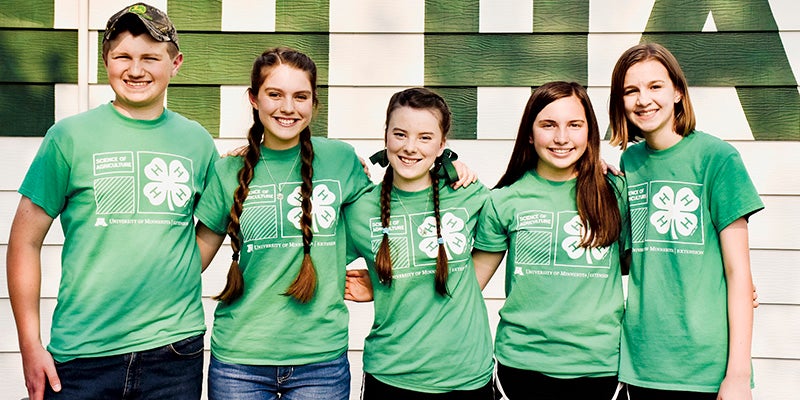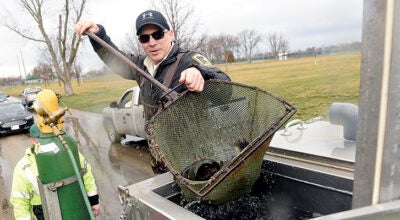Mower 4-H students take on solving ag issues
Published 11:59 am Saturday, June 1, 2019

- Left to right: Ryan VanPelt, freshman; Sarah Hecimovich, junior; Hannah Hecimovich, freshman; Megan Silbaugh, junior; and Kaitlin Meiergerd, eighth grader; are members of the first science of agriculture team that was sent to the state 4-H competition last year. They’re currently working on a project to help market lamb products for the local markets. Hannah Yang/hannah.yang@austindailyherald.com
Looking to solve agricultural issues specific to Mower County, several 4-H students are on a mission to find solutions to what the everyday person in the area may experience.
The 4-H Science of Agriculture Challenge through the University of Minnesota Extension offers hands-on learning experience to help grow the next generation of agriculture leaders in the state.
Teams made of two to five students in grades 6-12 work with coaches and mentors to create projects and come up with solutions.
Each team identifies an agriculture-related issue within their own communities, and create projects and solutions.
Last summer, the Mower 4-H team presented their project to a panel of industry judges at a state competition for the first time and placed third. Each member ended up receiving a $500 scholarship to put toward higher educational opportunities or trade school.
The team made of Ryan VanPelt, freshman; Hannah Hecimovich, freshman; Sarah Hecimovich, junior; Megan Silbaugh, freshman; and Kaitlin Meiergerd, eighth grade, took on the challenge of trying to see if the community in Mower County would be willing to try new products and offerings before dismissing them.
“We were stepping into uncharted territory (with 4-H Science of Agriculture),” Meiergerd said. “We spent a lot of time together and built good relationships with the community through 4-H.”
Identifying agriculture-related issues in the Mower County community, the 4-H team decided to tackle the ag-related issue of having the general public try new offerings for lamb meat, despite negative associations of the product that was engrained in history during World War II. Mutton has been long labeled as “tough” and “unflavorful” with many unwilling to give the meat a try.
Through the project, the Mower 4-H students worked with Hormel Foods Corporate as their mentor and tried to identify a key market that would bring more lamb products to consumers, such as creating lamb jerky.
“With more interest, there’d be more of an incentive for farmers to raise lamb,” VanPelt said. “Publicly, they’re not seeing the demand, and it’d really help the farmers and could definitely help the local agricultural economy by raising awareness on the interest for lamb.”
Last year the team conducted a blind panel to test out their theory. They offered lamb jerky and beef jerky for a side-by-side comparison as well as making sure not to identify the lamb jerky. They found that more people chose the lamb jerky than beef by 67 percent.
“We wanted to prove a point that people in our community are willing to try something new,” Silbaugh said. “We sent out surveys in the area to get an idea of what people want to see.”
Another effort that the Mower County 4-H Science of Agriculture team did was community outreach by handing out recipe books and to offer more options in meat and protein. By offering meals made from lamb meat, the team found that more potential consumers were willing to give lamb a try.
“We wouldn’t be importing as much from a far country we don’t know much about,” Sarah said. “About 70 percent of lamb in the U.S. is imported. We want to keep things local and knowing where our food comes from. We’re hoping this would encourage more people to eat stock that’s raised in the United States.”
This year, the Science of Agriculture team will be focusing on the beginning stages of marketing and researching the customer base around the area in order to determine whether a large marketplace or grocery store would consider selling more lamb products and support American-raised lamb.
“We are learning how to develop a business plan,” Hannah said. “Before marketing, we have to know where you get products from, and about food safety laws. There’s a lot of things you have to be aware of. It’s been a great experience.”



